3D Printing
Advanced 3D Printing Technologies for CAD and PLM
When it comes to CAD (Computer-Aided Design) and PLM (Product Lifecycle Management), the integration of advanced 3D printing technologies has revolutionized the way products are developed and manufactured. This cutting-edge combination empowers businesses to create complex designs with precision and efficiency, while streamlining the entire product development process.
Streamlining Product Development with 3D Printing and PLM
By harnessing the power of 3D printing and PLM, companies can significantly streamline their product development workflows. Through seamless integration, designers and engineers can leverage PLM platforms to collaborate on CAD models, optimize designs for 3D printing, and manage the entire product lifecycle from ideation to manufacturing. This integration enables cross-functional teams to work together seamlessly, resulting in accelerated time to market and enhanced product quality.
3D Printing Applications in CAD and PLM
The applications of 3D printing in CAD and PLM are vast and transformative. From rapid prototyping and functional testing to custom tooling and manufacturing aids, 3D printing offers unparalleled flexibility and versatility. CAD models can be directly translated into printable files, allowing designers to visualize their concepts in tangible form quickly. This capability opens up new possibilities for iterative design processes and enables the efficient production of complex geometries that were previously challenging to manufacture.
PLM Integration with 3D Printing Workflows
Integrating PLM with 3D printing workflows brings immense benefits to the product development ecosystem. PLM systems provide centralized control and visibility over design data, facilitating collaboration and version control. When combined with 3D printing workflows, this integration ensures that the correct version of a CAD model is used for printing, reducing errors and minimizing rework. Additionally, PLM can manage the entire additive manufacturing process, tracking materials, printing parameters, and quality control measures, thereby ensuring consistency and traceability throughout production.
Optimizing CAD Models for 3D Printing
Optimizing CAD models specifically for 3D printing is crucial to unlock the full potential of additive manufacturing. Designers must consider factors such as printability, structural integrity, and support material requirements when creating models for 3D printing. By leveraging advanced CAD tools and techniques, such as generative design and lattice structures, designers can create lightweight and efficient components that are tailored for additive manufacturing processes. This optimization leads to improved part performance, reduced material consumption, and enhanced overall efficiency.
Enhancing Design Iterations with 3D Printing and CAD
3D printing in conjunction with CAD enables rapid design iterations and iteration cycles, fostering innovation and accelerating the product development timeline. With 3D printers readily available, designers can quickly produce physical prototypes, test them, and identify areas for improvement. The ability to physically interact with the design iterations enhances the design validation process, allowing for better-informed decision-making and ultimately resulting in higher-quality final products. This iterative approach, coupled with the power of CAD, empowers designers to push the boundaries of what is possible and create groundbreaking solutions.


2 Review
Reinventing the way engineers and manufacturers produce metal partsfrom prototyping to mass production.
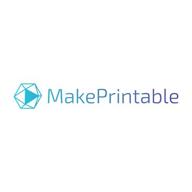

2 Review
MakePrintable is a cloud solution that analyses and repairs any 3D model for 3Dprinting.


1 Review
Solid Edge is a portfolio of affordable, easy to deploy, maintain, and use software tools that advance all aspects of the product development process – mechanical and electrical design, simulation, manufacturing, technical documentation, data management, and cloud-based collaboration. Developed on Siemens industry leading technologies, Solid Edge…
Read more about this company

1 Review
3DPrinterOS has developed the world’s first operating system for desktop 3D Printers. 3DPrinterOS now powers Bosch Dremel 3D Printers which are readily available for sales worldwide and at local stores like Home Depot and Amazon.

1 Review
Slic3r is the tool you need to convert a 3D model into printing instructions for your 3D printer. It cuts the model into horizontal slices (layers), generates toolpaths to fill them and calculates the amount of material to be extruded.



1 Review
Materialise Magics is a versatile, industry-leading data preparation and STL editor software for Additive Manufacturing that allows you to convert files to STL, repair errors, edit your design and prepare your build platform.



1 Review
Optimize Your Print Processes in PreForm ,design model in standard CAD software, then import the STL or OBJ file into print preparation software.

1 Review
ReplicatorG is a simple, open source 3D printing program. This is the software that will drive your MakerBot Replicator, Thing-O-Matic, CupCake CNC, RepRap machine, or generic CNC machine. You can give it a GCode or STL file to process, and it takes it from there. It's cross platform, easily installed, and is based on the familiar Arduino / Processing…
Read more about this company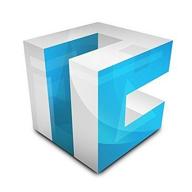

1 Review
Problem: Professional level 3D software is hard to learn, while entry level software is laggy and limited. And both of them require multiple programs to get the 3D printing job done. The Solution SelfCAD offers professional level capabilities, is easy to learn, fast, and does not require any additional programs to get a 3D printing job done. SelfCAD is…
Read more about this company
1 Review
Ultimaker Cura prepares your model for 3D printing. Optimized, expert-tested profiles for 3D printers and materials mean you can start printing reliably in no time. And with industry-standard software integration, you can streamline your workflow for maximum efficiency.


1 Review
The 3D-Tool Free Viewer is free for private and commercial usage. It is made to open DDD models published with the 3D-Tool CAD viewer but it is also a powerful freeware STL viewer. The chargeable commercial 3D-Tool CAD viewer supports most common CAD systems and 3D file formats and there is also a free 14 day trial available.


1 Review
Manage your 3D printers and files from a single platform. Access your 3D printing workflow from web, desktop, and mobile apps.
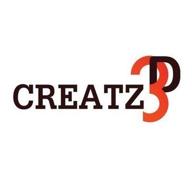


1 Review
Founded in 2015, MakerOS is a collaboration platform for digital fabrication and 3D printing companies to improve client workflows and increase profits.
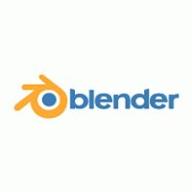

1 Review
Blender is an open source 3D creation suite that supports the 3D pipeline, modeling, rigging, animation, simulation, rendering, compositing, and motion tracking, video editing, and game creation.
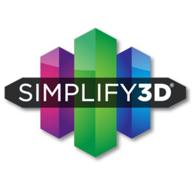
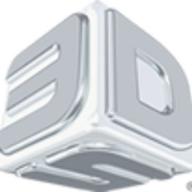

1 Review
Geomagic Freeform is a multi-purpose 3D sculpting design platform that lets you create complex, sculptural, production-ready 3D models and quickly prepare them for 3D printing, or mold and die manufacturing.

- 3D printing software refers to computer programs specifically designed to create, modify, and prepare 3D models for printing on 3D printers. These software tools allow users to design objects in three dimensions, apply textures and colors, and generate the necessary files for the 3D printer to interpret and manufacture the physical object.
- Common features of 3D printing software include 3D modeling capabilities, which allow users to create or import 3D models; tools for modifying and editing designs; support for various file formats; options for adjusting print settings, such as resolution, infill density, and support structures; and the ability to visualize and preview the 3D model before printing.
- There are several types of 3D printing software available, including CAD software (Computer-Aided Design), which is used for creating complex 3D models from scratch; slicing software, which takes 3D models and generates the toolpath instructions for the 3D printer; and repair software, which fixes any issues or errors in the 3D model to ensure a successful print.
- 3D printing software typically supports widely used file formats such as STL (Standard Tessellation Language) and OBJ (Wavefront OBJ). These formats store the geometry of the 3D model and are compatible with most 3D printers. Additionally, some software may support other formats like AMF (Additive Manufacturing File Format) and STEP (Standard for the Exchange of Product Data).

